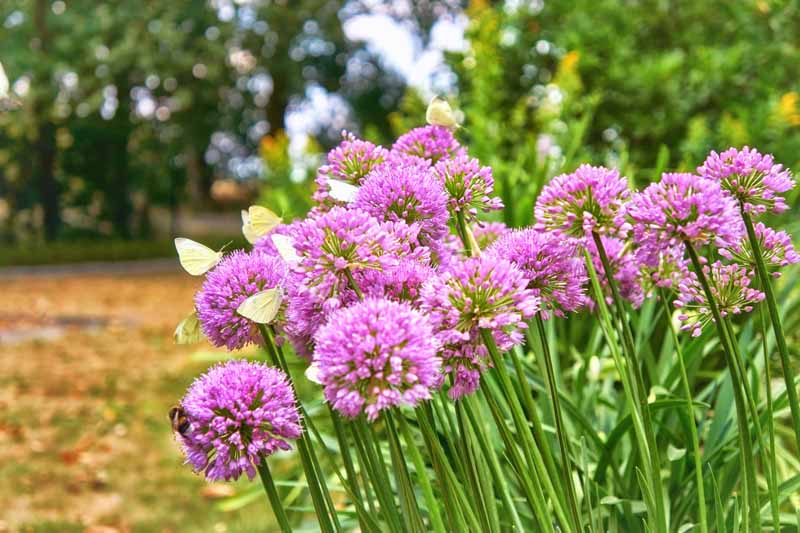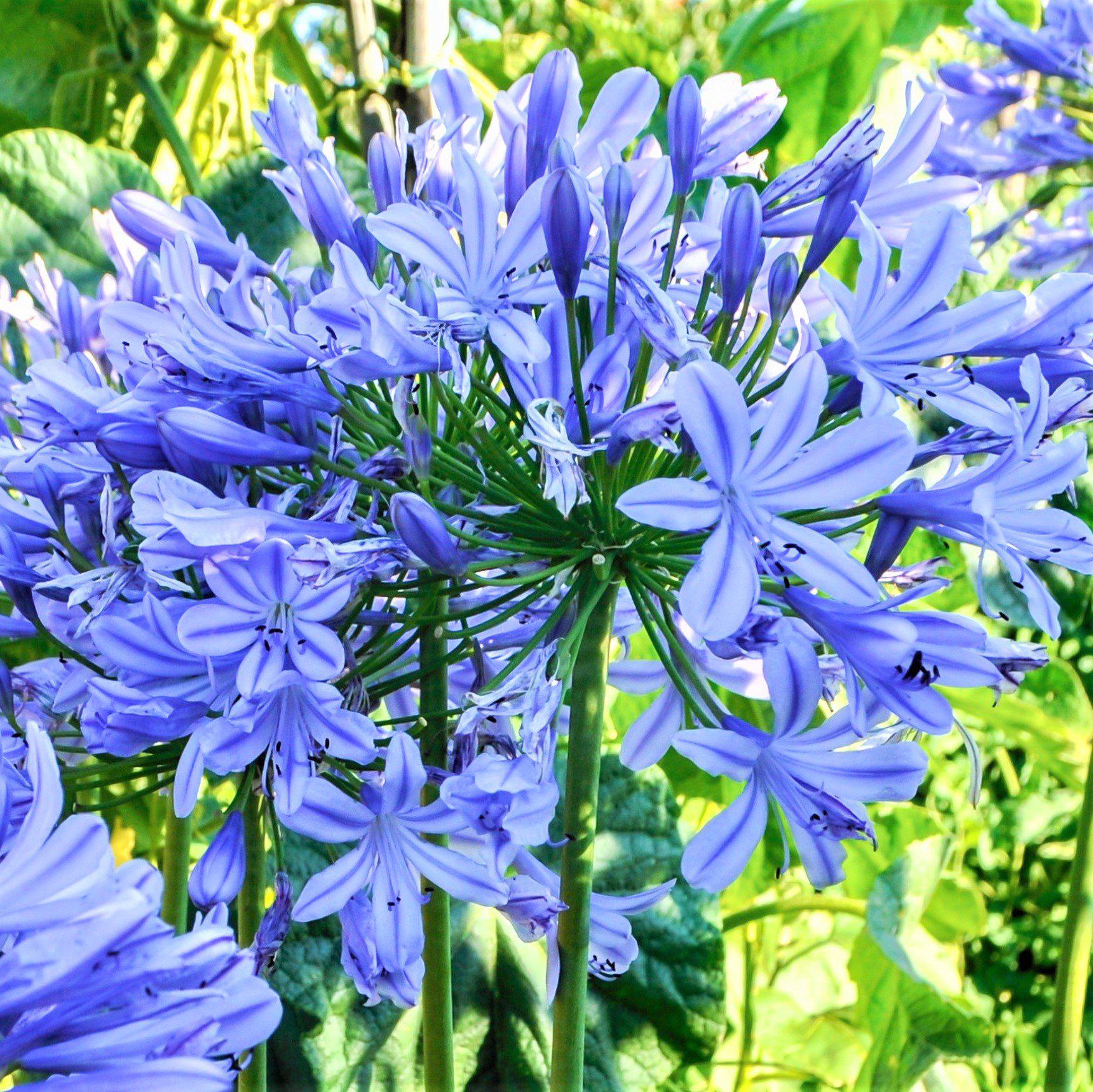Expanding Agapanthus: A Full Guide to Beautiful Blooms
Expanding Agapanthus: A Full Guide to Beautiful Blooms
Blog Article
Letting Loose the Secret to Successful Agapanthus Cultivation: Idea for a Flourishing Garden
In the world of gardening, cultivating agapanthus successfully requires a critical approach that encompasses various elements of plant treatment. By comprehending the nuances of agapanthus farming, one can develop an atmosphere where these plants flourish and bloom generously.
Growing Agapanthus: Finest Practices
When planting Agapanthus, correct dirt prep work is vital for guaranteeing effective development and development of these gorgeous blossoms. Agapanthus, commonly referred to as Lily of the Nile or African lily, grows in well-draining dirt with a somewhat acidic to neutral pH level - Agapanthus. Before growing, it is crucial to modify heavy clay soils with raw material such as compost or peat moss to enhance water drainage and offer vital nutrients for the plants
To plant Agapanthus, pick a location that receives complete sunshine to partial color, as this will certainly advertise healthy and balanced development and bountiful flowering. Dig a hole twice the size of the plant's origin round and position the Agapanthus at the same depth it was formerly growing. Gently backfill the hole with soil, pushing down securely to get rid of any kind of air pockets around the origins.
Water the recently grown Agapanthus thoroughly and proceed to keep the dirt equally moist, particularly during the plant's active growing period. Agapanthus. Applying a well balanced plant food once a month can better support the plant's growth and flowering. By complying with these finest practices for growing Agapanthus, you can develop a stunning screen of these captivating flowers in your yard
Ideal Dirt Conditions for Agapanthus
For ideal development and growing success of Agapanthus plants, making sure the dirt conditions are excellent is vital. Agapanthus prefers soil that is abundant in nutrients, so integrating a well balanced fertilizer throughout the expanding season can advertise healthy and balanced growth and vivid blossoms.

Watering and Feeding Tips
To guarantee healthy and balanced development and vibrant blooms, appropriate watering and fertilizing techniques are necessary for effective Agapanthus farming. Agapanthus plants profit from normal watering, especially throughout the expanding period.
When it concerns fertilizing Agapanthus, a balanced fertilizer with equal parts nitrogen, phosphorus, and potassium can be used in the spring to advertise healthy growth and flowering. Slow-release fertilizers are optimal for giving nutrients progressively over an extensive period. Stay clear of over-fertilizing, as this can result in excessive vegetation development at the expense of blossoms.
Additionally, integrating natural matter like garden compost right into the dirt can boost nutrient degrees and boost soil structure, assisting in the overall health and wellness of the Agapanthus plants. By complying with these watering and feeding ideas, garden enthusiasts can guarantee their Agapanthus plants prosper and produce stunning displays of flowers.
Pruning and Deadheading Methods
Correct pruning and deadheading techniques play an essential duty in maintaining the wellness and aesthetics of Agapanthus plants, enhancing Recommended Reading the important techniques of watering and fertilizing for successful growing. Pruning Agapanthus entails eliminating spent blossom heads, dead or yellowing leaves, and total shaping of the plant to advertise far better growth. Deadheading, the process of removing discolored blossoms, not only boosts the plant's look but additionally motivates more flowering.
When deadheading Agapanthus, it is advisable to clip off the flower stem at the base utilizing sharp, tidy shears. This process reroutes the plant's energy from seed production back into origin and foliage growth, promoting a healthier and much more robust plant. Regular deadheading can expand the growing period of Agapanthus and stop self-seeding, which can cause congestion.
In regards to trimming, Agapanthus normally gain from a light trim after flowering to clean up the plant and motivate fresh growth. Reducing the invested blossom stems and getting rid of any type of broken or dead vegetation assists keep the plant's vigor and overall appearance. Nonetheless, it is essential to avoid cutting right into the crown of the plant, as this can weaken its health and wellness.

Protecting Agapanthus From Pests and Diseases
Implementing efficient bug and disease monitoring approaches is critical to safeguarding the health and vigor of Agapanthus plants in farming. One typical pest that impacts Agapanthus is the Agapanthus borer, a caterpillar that tunnels into the plant, causing damages to the fallen leaves and blossoms.
In enhancement to bugs, Agapanthus are vulnerable to diseases such as root rot and fungal fallen leave areas. These problems can typically be prevented by making certain appropriate drainage and avoiding overwatering. Affected components of the plant should be immediately removed to stop more spread if signs of illness show up. Fungicides may additionally be utilized as a therapy action, adhering to the supplier's instructions carefully. By remaining attentive and resolving insect and illness issues without delay, gardeners can aid their Agapanthus thrive and prosper.

Verdict
Finally, effective farming of agapanthus needs proper growing techniques, suitable dirt more helpful hints conditions, adequate watering and fertilizing, routine trimming and deadheading, and protection from diseases and parasites. By following these ideas and methods, garden enthusiasts can make sure a flourishing yard full of attractive agapanthus blossoms. Agapanthus. Bear in mind to preserve consistent treatment and interest to information to promote the health and longevity of these stunning plants
When planting Agapanthus, proper dirt preparation is essential for making sure effective growth and read this advancement of these stunning blossoms.Water the freshly planted Agapanthus extensively and continue to keep the soil evenly wet, specifically throughout the plant's energetic growing period.For optimum growth and growing success of Agapanthus plants, making sure the dirt problems are perfect is vital. When growing or transplanting Agapanthus, make certain the dirt is well-prepared to give the essential foundation for the plants to establish themselves successfully. One typical pest that affects Agapanthus is the Agapanthus borer, a caterpillar that passages into the plant, creating damages to the flowers and leaves.
Report this page